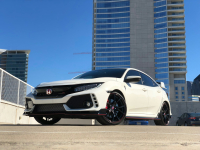There are medications used to treat schizophrenia symptoms but they can have significant side effects and patients frequently discontinue their use. Some patients also receive electroconvulsive therapy (ECT), which has benefits for short-term treatment of severe symptoms but also has potential adverse effects and does not always work for this condition.
In an article published in Translational Psychiatry , researchers from China present data on an uncontrolled study of valproicacid, a mood-stabilizing drug used clinically to treat mania and epilepsy. This retrospective analysis of data from 97 http://mzcr.cz/Legislativa/dokumenty/informacni-seminar-k-pripravovanemu-programu-zdravi-v-ramci-nadchazejiciho-progr_15880_3855_8.html child and adolescent patients with schizophrenia found that valproic acid treatment was associated with a significant reduction in symptoms, especially hallucinations and delusions. The researchers suggest that further research on proven safe treatments is needed to help manage challenging child psychiatric disorders, such as schizophrenia.
Valproic acid has been shown to have effects on the dopamine reward system implicated in schizophrenia, which may explain why it could be effective for psychotic symptoms. In this study, child psychiatrists at 39 hospitals across China assessed child and adolescent patients aged 6-18 years old who were diagnosed with chronic or florid (acutely intense) paranoid schizophrenia using ChineseClassification of Mental Disorders, third edition (CCMD-3) criteria. Patients were started on valproic acid at a dose of 500 mg/day and then titrated up or down as needed. The average dose was 1,023 mg/day.
The researchers found that the percentage of patients with a 50 percent or greater reduction in symptoms was significantly higher in the valproic acid group than in the control group (74.5 percent vs. 36.8 percent). In addition, the number of patients who had a complete remission of symptoms was also higher in the valproic acid group (27.1 percent vs. 3.2 percent). There were no significant differences between the two groups in terms of adverse effects.These findings suggest that valproic acid may be a safe and effective treatment for child and adolescent patients with schizophrenia. The study was uncontrolled and did not have a placebo group, so further research is needed to confirm these results. However, this study provides evidence that there may be other safe and effective treatments for child psychiatric disorders beyond medications and ECT. This could provide hope for children and families who are struggling with these devastating disorders.






